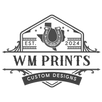In the ever-evolving landscape of manufacturing, businesses and individuals often face the dilemma of choosing between 3D printing and traditional manufacturing. Both methods have their strengths and weaknesses, and their applicability largely depends on the specific requirements of a project. In this blog post, we will explore the key differences in cost, speed, and impact between these two manufacturing methods. For those interested in innovative 3D printing solutions, consider checking out WM Prints.
Cost Considerations
Traditional Manufacturing
Traditional manufacturing, which includes processes like injection molding, CNC machining, and casting, often involves significant upfront costs. The tooling and setup expenses can be prohibitively high, especially for low production volumes. However, for large-scale production, the per-unit cost decreases significantly, making it cost-effective in the long run.
3D Printing
On the other hand, 3D printing generally has lower initial costs since it doesn't require special tooling. The cost of a 3D printed item mainly depends on the materials used and the time required for printing. This makes it a more viable option for prototypes, custom items, or short production runs. Interested in precision accessories? Check out the Lyman Type Prep Tools Holder for a practical example of 3D printed innovation.
Speed of Production
Traditional Manufacturing
Traditional methods typically involve multiple steps before the actual production begins, such as designing and testing molds or tooling. This can lead to extended lead times, particularly for custom requests or new products.
3D Printing
One of the primary advantages of 3D printing is its ability to quickly move from design to production. This rapid turnaround makes it ideal for prototypes or projects that require a quick market entry. Changes can be implemented swiftly without the need for retooling, offering excellent flexibility.
Impact on Innovation and Sustainability
Traditional Manufacturing
While traditional methods have been honed over decades for precision and efficiency in mass production, they can sometimes hinder innovation due to their rigidity and associated costs of changeovers.
3D Printing
3D printing encourages creativity and experimentation due to its flexibility and accessibility. It also aligns well with sustainability goals, as it reduces waste by using only the material needed to build the object, layer by layer. This efficient use of resources not only lessens environmental impact but also provides more room for customization and innovation.
Conclusion
Choosing between 3D printing and traditional manufacturing involves weighing various factors such as cost, speed, and impact. For bespoke, small-scale, or highly innovative projects, 3D printing often holds the upper hand with its cost-effectiveness and rapid turnaround. Traditional manufacturing, however, remains unrivaled for large-scale production and projects requiring high precision. As technology advances, the line between these two methods continues to blur, promising exciting possibilities for the future of manufacturing.
For further insights into the capabilities of 3D printing, visit WM Prints.





